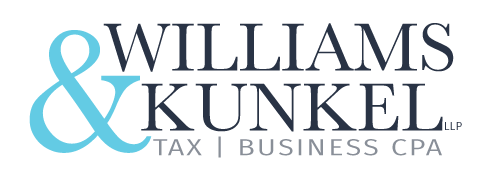Since the 2017 Tax Cuts and Jobs Act, donors should contemplate whether charitable planning will provide an immediate or future benefit. (Flower Mound Tax Pros: How Charitable Planning Can Save You Money)
With that said, here are five charitable planning options that can save you money on taxes in 2019 and beyond:
1. Donor-Advised Fund (DAF)
A donor-advised fund is a separately managed charitable investment account that is operated by a section 501(c)(3) organization, also known as a sponsor or sponsoring organization. You can contribute cash, appreciated securities, real estate and other property to receive an immediate tax deduction. Those assets grow tax-free. You can make recommendations to any charity, although the sponsoring organization makes the final decision.
The main advantage of a donor-advised fund is an upfront tax deduction. The disadvantages involve loss of control with contributions, investment fees charged, and the sponsoring organization having the final choice on the charity that receives the funds.
2. Charitable Lead Trust (CLT)
A charitable lead trust is a type of irrevocable trust that provides income payments to a charity for a period of time. Typically, through a fixed term of years, with the remainder either going to the donor or donor’s family members. Gifts include cash, appreciated securities, real estate and other types of property. Depending on the type of charitable lead trust — grantor or non-grantor — the purpose for establishing either can be for estate or gift tax reduction, as well as an income tax deduction.
A grantor charitable lead trust makes payments to a charity for a fixed period of years, with the remainder going back to the donor. With this structure, the donor would receive an upfront income tax deduction for the present value of the charitable donation. However, the donor would not receive any additional tax deductions for future distributions made to a charity through the rest of the term.
A non-grantor charitable lead trust makes payments to a charity for a fixed period of years. The remainder goes to family members or other persons who are not the donor. With this structure, the donor can substantially — or potentially entirely — avoid paying estate or gift taxes.
The advantages to the donor are either an upfront tax deduction or estate or gift tax reduction. In addition, the charity will also instantly benefit the most from this arrangement because of the immediate payments that will be made. Once assets transfer to the trust, they cannot be removed.
3. Charitable Remainder Trust (CRT)
A charitable remainder trust is another type of irrevocable trust, and the complete opposite of a charitable lead trust. Assets transfer to the charitable remainder trust. This gives an immediate tax deduction, in addition to income, for a period of time or the rest of your life. Gifts include cash, appreciated securities, real estate and other types of property.
The income stream can be paid to you, a spouse, and any leftover will go to a beneficiary if you were to pass away prematurely and didn’t receive the predetermined income payments. At death, the remainder goes to the charity of your choice.
The advantages to the donor are the upfront tax deduction as well as the income payments made. Keep in mind that with this structure a charity will only benefit from this arrangement after you pass away. The disadvantage is that once assets are transferred to the trust, they cannot be removed.
4. Charitable Gift Annuity (CGA)
A charitable gift annuity is an irrevocable contract between a donor and a charity that provides an upfront tax deduction as well as a lifetime stream of income payments. Gifts can be cash, appreciated securities, real estate and other types of property.
Many nonprofits and large universities offer charitable gift annuities. The advantages to the donor are the upfront tax deduction as well as the income payments. Similar to a charitable remainder trust, the charity will only benefit from this arrangement after you pass away. Once assets transfer to the trust, they are there permanently and payments will cease if the charity goes insolvent.
As you can see, the charitable remainder trust and charitable gift annuity are very similar. The differences lie in their structure. Charitable gift annuities are contracts and pay you fixed payments for the rest of your life, not adjusted for inflation. Payments are backed by the charity’s assets and are more regulated than a charitable remainder trust. With a charitable remainder trust, you can choose from either fixed or variable payments with both the tax deduction and payout potentially greater versus the charitable gift annuity. Also, the charitable remainder trust has more flexibility in case you want to contribute appreciated assets.
5. Qualified Charitable Distribution (QCD)
A qualified charitable distribution is for those age 70½ or more who don’t want the required minimum distribution (RMD) from their IRA. Although a QCD doesn’t provide an upfront tax deduction or lifetime income like a charitable gift annuity or trust would, it’s an overlooked tax loophole because retirees can exclude up to $100,000 per year from their RMDs without having to claim it on their tax return. The QCD passes directly from your IRA to a charity without having to be claimed as income. Your spouse can also exclude up to $100,000 per year as well.
The advantage to the donor is the exclusion of up to $100,000 per year from their tax return (each spouse). This can help reduce Social Security taxation as well as Medicare premiums due to the lower adjusted gross income (AGI). Once the RMD is transferred to a charity, it is irrevocable and cannot be undone.
While it’s vital to have this conversation with a well-versed tax or financial professional, donors should explore certain charitable vehicles (or a combination) to maximize their tax deductions now while supporting a favorite charity at the same time. Otherwise, these opportunities may cease or substantially change in the next few years.
Call Williams & Kunkel CPA today in Flower Mound at 972-446-1040 to have a chat and find out how you can save money on your taxes as a real estate professional.
In addition, you can connect with us to receive updates throughout the business week by following us on Twitter or LinkedIn or liking us on Facebook.
Source: Kiplinger

